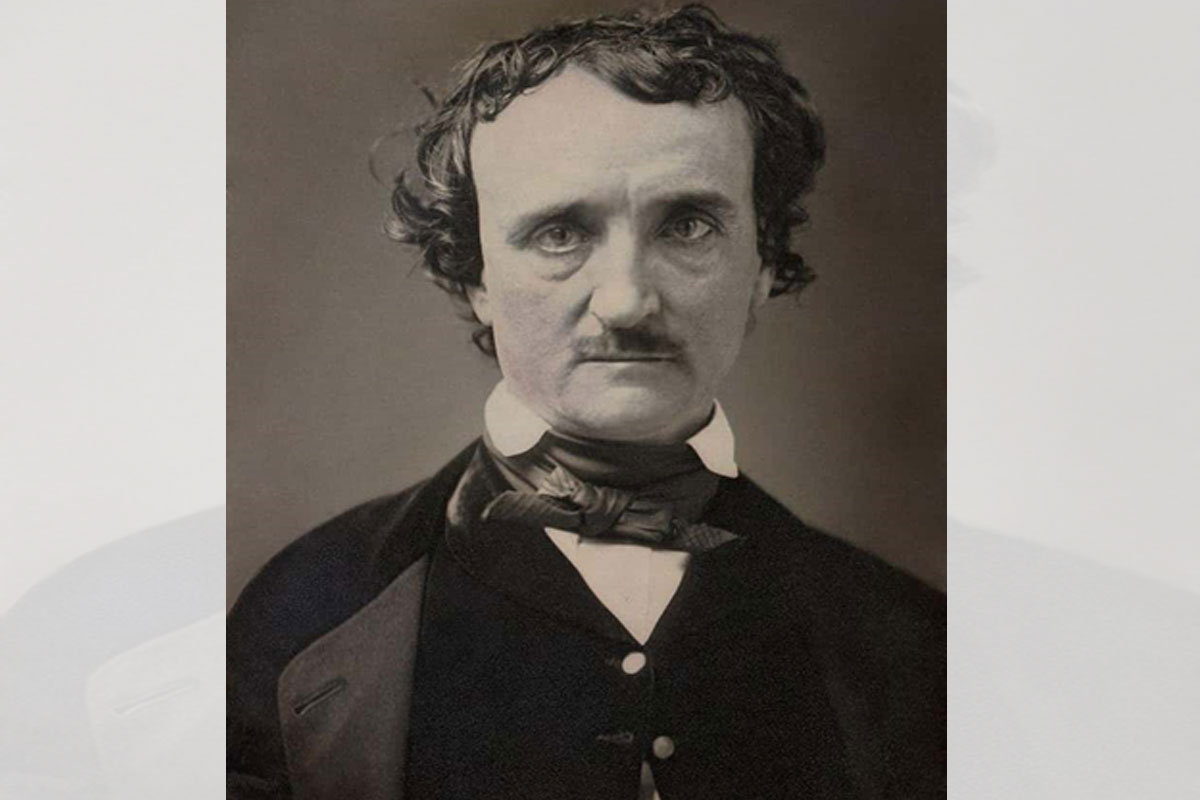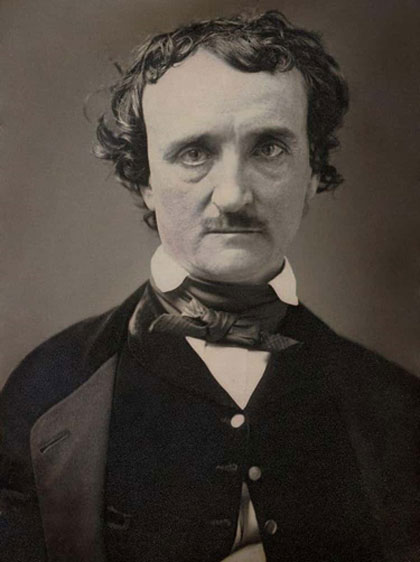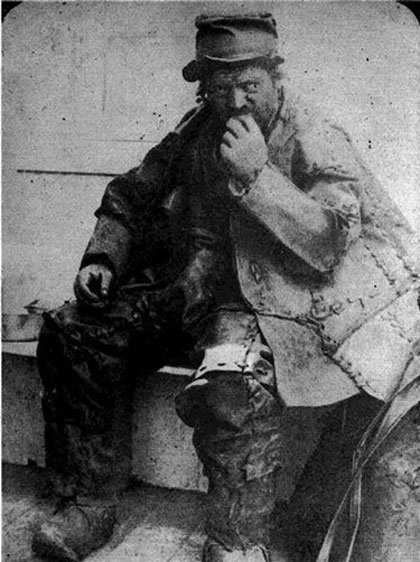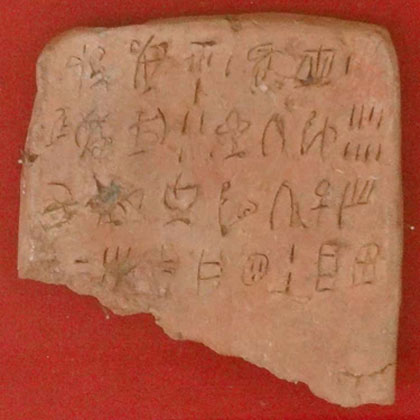
Mysteries We’re Still Trying To Answer
Lauren Glen
Time has the power to reveal the truth – eventually. Often, we count on this notion when we’re confronted with creepy and disturbing mysteries that we just can’t wrap our heads around. Comforting ourselves with the knowledge that experts will certainly solve the perplexing stories we can’t seem to stop thinking about allows us to sleep comfortably at night and move through our days with a little less anxiously driven inquisitiveness.
However, sometimes the past leaves us with more questions than answers, and not all mysteries are solvable, even as new technology and historical studies emerge over the years. This list features some of the most puzzling murder cases, unusual archeological finds, and elusive figures in history whose answers we’re still seeking.
________________________________________
• Photo: Unknown / Wikimedia Commons / Public domain
 1
1
How Did Edgar Allan Poe Really Perish?
On September 27, 1849, Edgar Allan Poe left Richmond, VA, to attend to some editing business in Philadelphia. It was the last time anyone ever saw the poet in a healthy state.
Days later, on October 3, Joseph W. Walker made his way to Baltimore’s Gunner’s Hall public house to place his vote in the upcoming election. As he arrived, Walker noticed a shoddily dressed man lying in a nearby gutter. Upon further inspection, he realized the delirious man he intended to help was Poe. Although he could barely speak, Poe asked Walker to write to magazine editor and medically experienced Joseph E. Snodgrass for help.
Poe never recovered from the incident, remaining in a state of delirium until his passing on October 7. No one ever learned how he came to be in the state in which Walker found him. Poe repeatedly asked his attending physician for “Reynolds” between hallucinatory fits, though the person’s identity or relation to the poet was unknown. His death certificate claims he suffered a swelling of the brain, but this evasive rationale is also shrouded in mystery.
Over the years, researchers and investigators have claimed numerous causes for Poe’s state in his final days, including being beaten, his inability to hold alcohol, a brain tumor, the flu, rabies, carbon monoxide or heavy metal poisoning, cooping (a practice where local gangs beat someone and dress them in a stranger’s clothes to force them to vote for their championed candidate), and murder.
What do you think?
Mind-melting mystery?
• • Photo: Paul Delaroche / Wikimedia Commons / Public domain
 2
2
What Happened To The Princes In The Tower?
British princes Edward and Richard were born to King Edward IV and Elizabeth Woodville during the Wars of the Roses, which ran from 1455 to 1487. As the two battling families fought for their claim to the throne, Edward IV passed in 1483, leaving his oldest son and heir to the throne, Edward, under the care of his brother, Richard, Duke of Gloucester (later to become Richard III). Soon after, the duke placed both princes in the Tower of London under the guise that he was “protecting” them from being harmed during the bloody conflict. Neither was ever seen again.
The boys’ remains have never been found, but most scholars believe they were murdered. Possible suspects with probable motives include their Uncle Richard (as dramatized in Shakespeare’s play, Richard III); the Duke of Gloucester’s friend-turned-enemy Henry Stafford; Henry VII, who was on the opposing side of the princes’ family and was hoping to acquire the seat as the British monarch; or perhaps Henry Tudor’s mother, Margaret Beaufort.
To add to the mystery, unidentified remains are housed in an urn in Westminster Abbey, and many Tudor and Stuart historians believe they could be the bones of the missing princes. When Richard III’s missing remains were found in 2012, many pushed for the unidentified bones to be DNA tested. The monarchy and the Church of England refused.
• 53 votes
Mind-melting mystery?
• • Photo: James F. Rodgers / Wikimedia Commons / Public domain
 3
3
Who Was ‘The Leatherman,’ Who Walked 365-Mile Circles In Leather Clothing And Slept In Caves?
In the 1800s, a mysterious person known as the “Leatherman” consistently walked a 365-mile circle for no apparent reason. Although no one ever learned his name, where he came from, or why he chose to make the trek, he became a beloved local celebrity.
The Leatherman wore a boot suit – an outfit constructed from old leather boots and ties that weighed more than 60 pounds – through all weather and seasons. He slept in caves and was so consistent in his schedule that locals could tell the time based on his location. The
Leatherman completed the circuit between the Hudson and Connecticut rivers every 34 days, walking through 40 small towns along the way.
Although he never spoke beyond a few grunts in English or French, adults and children looked forward to his visits. When he stopped by a home, it was considered an honor, and schoolchildren stayed on their best behavior in hopes of being chosen to bring the Leatherman food when he passed their campuses.
After he perished, so many people visited his roadside grave that the local historical society decided to move it farther inland to avoid potential accidents. When the body was exhumed for reburial in 2011, many people thought DNA testing might help solve the mystery of who he was.
However, those hopes were dashed when they opened the casket to find the remains were missing. Now the Leatherman is shrouded in even more mystery: No one knows who he was or where he is.
Mind-melting mystery?
• • Photo: FBI / Wikimedia Commons / Public domain
 4
4
Who Was Behind The Gardner Museum Heist?
During the early morning hours of March 18, 1991, two men dressed as police officers rang the bell of Boston’s Isabella Stewart Gardner Museum. After the duo claimed they were there to investigate a possible disturbance, a museum guard allowed them in through the employee entrance.
It soon became evident that they were not officers, and were there with much more menacing intent. After tying up and handcuffing the two guards in charge of patrolling the museum in the building’s basement, the intruders began cutting some of the world’s most valuable pieces of art from their frames.
Over 81 minutes, the pair successfully stole 13 pieces of art before leaving without a trace. Although the museum was equipped with motion detectors, thus demonstrating the timeline of events, no one has been able to identify the thieves.
The art, including multiple Rembrandts, five Degas sketches, and a Manet, were never found. The museum has offered a $10 million reward for any information leading to the recovery of the art and the positive identification of the perpetrators. As a tribute to the lost items, the museum kept the empty frames hanging on its walls.
Mind-melting mystery?
• • Photo: Roblespepe / Wikimedia Commons / CC-BY-SA 3.0
 5
5
When Were People First In The Americas?
While most experts agree that humans migrated to the American continents in the past 25,000 years, the actual date – and how they arrived – remains uncertain.
For decades, the most widely accepted narrative of American migration patterns centered around the ice bridge theory of the Bering Strait.
As the earth began to warm, it revealed land bridges from Siberia into present-day Alaska. Many scientists believed that the Clovis people (named for their large flint spearheads), who traveled down the coast by foot and settled in modern New Mexico around 13,500 years ago, were the very first Americans.
However, other archeological finds throughout the Americas disprove this popular narrative. In the late 1970s, archeologists uncovered an ancient settlement at Monte Verde in southern Chile; radiocarbon-dating indicated the site was 14,800 years old. Notably, no Clovis spear points were found at the site, so the ancient peoples who established the Monte Verde settlement were not Clovis people, and had arrived before them.
Despite most archeologists denouncing pre-Clovis findings, such as those at Monte Verde, other independent archaeologists have also found evidence that humans arrived before the Clovis population. At the Buttermilk Creek Complex archaeological site north of Austin, TX, researchers found 15,528 artifacts that dated back 15,500 years. In northern Florida, archaeologists found a mastodon tusk with knife carvings that dated back more than 14,500 years. One study from New Mexico even found an ancient human footprint that could be more than 23,000 years old.
Scientists now widely accept the “coastal route theory,” suggesting that the first Americans arrived by boat down the Pacific coast. While experts initially believed it was impossible to travel by boat during the era that these pre-Clovis people arrived, geologists have discovered a span between 24,500 to 22,000 years ago – then another between 16,400 to 14,800 years ago – that would have allowed for sea travel.
Mind-melting mystery?
• • Photo: Unknown / Wikimedia Commons / Public domain
 6
6
What Really Happened In The Lizzie Borden Case?
Although Lizzie Borden’s horrific crimes against her father and stepmother are well remembered throughout history, the details surrounding the case remain a mystery. Even the popular rhyme describing the slaying of her parents gets critical details wrong. Stepmother Abby was felled by 19 hits with a hatchet, while father Andrew only received 10 blows to the face, not 41. While modern scholars believe without a doubt that Lizzie (who was proven innocent in court) did commit the crimes, what really happened that day may never be discovered.
Andrew and Abby Borden were wealthy, popular, prominent Protestants in their community, and Lizzie herself taught Sunday school. It was 1892, when many Irish Catholics were migrating to the US – including to Borden’s hometown of Fall River, MA. Given the nativism and stereotypical beliefs of the time, the police officers who initially arrived at the crime scene assumed it was most likely committed by a “foreigner.” Despite having two immigrant doctors living next door and across the street who could have provided aid, Lizzie refused to use anyone but a New England physician – who happened not to be home at the time of the alleged murders.
As a member of a well-liked family, no one could imagine that someone like Lizzie could possibly commit double murder. The town doubted her guilt even when investigators revealed that she had tried to purchase prussic acid (better known as hydrogen cyanide) the day before and gave contradictory information regarding her whereabouts the day of the event. The judge, district attorney, and police marshal determined that she was “probably guilty” and arrested her.
Soon after, suffragists and other women’s groups rallied to her defense. After she used her father’s wealth to secure one of the best lawyers in the area, the pressured jury reluctantly found Lizzie innocent. The details of how the events transpired, the motive, and the murder weapon were never discovered.
Mind-melting mystery?
• • Photo: Evan Freed / Wikimedia Commons / Public domain
 7
7
Who Was The Woman In The Polka Dot Dress Who May Have Helped Assassinate Bobby Kennedy?
When Sirhan Bishara Sirhan, a Jordanian born in then-Palestine, shot and killed presidential hopeful Bobby Kennedy at the Ambassador Hotel in 1968, many people believed it would be an open and shut case. Sirhan, who supposedly was acting out of revenge for the younger Kennedy’s support of the conflict in Israel, was captured on camera loading his gun and firing off eight shots at the politician.
However, more than two dozen witnesses insisted Sirhan hadn’t acted alone – that he’d been accompanied by a woman in a polka dot dress.
The hotel assistant Maître d’ who helped wrestle the gunman to the ground swore that Sirhan was too far away to make the close contact necessary for Kennedy’s fatal wound, which coroner reports said happened only an inch from the back of his skull.
Waiter Vincent DiPierro, who witnessed the events, also gave testimony to seeing a woman with Sirhan during the event. Multiple other witnesses claimed they too had seen a woman in a polka dot dress running through the hotel with Sirhan yelling, “We shot him!”
Two weeks after the testimonies concerning the possible female accomplice, witness Sandra Serrano-Sewell supposedly recanted her statement regarding the mysterious woman. However, in 1988, Serrano-Sewell admitted on live radio that she had never recanted her account of hearing the woman yelling that she and Sirhan had shot Kennedy, and that the police had pressured her into swearing that her statement was false.
In 2011, Sirhan’s lawyers came forth with new evidence, saying that under hypnosis and through numerous other interviews, he had admitted having met the girl in the polka dot dress and having her as an accomplice. The court ruled against his appeal, and he remained in prison to carry out his life sentence.
• 72 votes
Mind-melting mystery?
• • Photo: Internet Archive Book Images / Flickr / Public domain
 8
8
What Was The ‘Monkey Man’ Of Delhi?
In 2001, an elusive “Monkey Man” terrorized the poorer neighborhoods of Delhi, India. He preferred the early morning hours of midnight to 4 am to confront his prey, though witness testimonies reveal differentiating visual accounts. Some asserted he had metal teeth and claws, while others claimed he had wild, green-glowing eyes – a description that contrasts with other testimonies swearing his eyes looked like red flames. In some accounts, the beast had a furry black hide and donned roller skates.
Delhi police weren’t convinced the creature existed at all, but physicians who assessed bite marks on victims confirmed that a human didn’t make them. Whatever its nature, the Monkey Man assaulted more than 348 people, resulting in at least three deaths and causing hysteria throughout the city. Vigilantes marched through the streets at night, wielding sticks as protection. The animal’s mysterious appearance was never explained, despite Delhi police offering $1,000 rewards to anyone who could provide information.
Mind-melting mystery?
• • Photo: Olaf Tausch / Wikimedia Commons / CC-BY 3.0
 9
9
What Is The Ancient ‘Linear A’ Script?
Archaeologists have found written tablets and objects displaying a script known as “Linear A” throughout the southern Greek island of Crete.
Dating back to 1700 BCE, the perplexing pictorial writing style usually consists of four to nine lines. Scholars believe there are anywhere from 77 to 85 symbols, suggesting that the writing form represents syllabic language.
Still, scholars cannot decipher or connect the writings to any known ancient language. Many suspect the script represents a pre-Hellenistic communication style, while others believe the language isn’t of European descent at all.
Because the script is found in Minoan palaces known to be redistribution centers, some scholars argue think Linear A served as a form of bookkeeping for accounting records. Although some of the signs have been deciphered to represent a numerical system, the actual names of those numbers are still unknown.
Mind-melting mystery?
• • Photo: Alexikoua / Wikimedia Commons / CC-BY-SA 3.0
 10
10
Who Were The Sea People?
Ancient Egyptian texts, Hittite sources, and other archeological finds all describe wars with “Sea People” that eventually led to the end of the Bronze Age and the collapse of multiple empires in the 13th century BCE. Unfortunately, the artifacts are so vague that scholars are unable to pinpoint who the people were, or where they came from.
French Egyptologist Gaston Maspero named the elusive group in 1881 after discovering ancient texts that described the bands of infiltrators as coming from the sea. However, the texts never reveal where the people originated, only that they were most likely intent on establishing permanent residence in Egypt.
Some scholars believe the Egyptian rulers of the era must have recognized the group, considering that they are never explicitly named in the ancient battle recounts of Egyptian rulers Ramesses II, Merenptah, and Ramesses III.
Mind-melting mystery?
• • Photo: Susannah Binsted / Flickr / CC-BY 2.0
 11
11
Who Tried To Flush $100,000 Down An Australian TV Station’s Toilet?
In 2011, janitor Chamindu Amarsinghe hit the jackpot when he found numerous $50 and $100 Australian bills in the toilet of an Australian TV show studio’s restroom. Initially believing someone was playing a prank on him – before touching the papers and realizing they were authentic – Amarsinghe contacted his supervisor.
Soon after, the police and a plumber arrived on the scene. After digging out $100,000 from the lavatory, authorities began searching for answers. No one came forward to claim the hidden cash. Although investigators eventually arrested Emerald Nguyen for hiding the cash in the restroom, charges were later dropped when he claimed he had been intoxicated and had no memory of the events.
For his honesty, Amarsinghe was awarded approximately $80,000 of the cash. The good news came just as he was earning his degree at an IT school in New Zealand and working at a fast-food restaurant to make ends meet.
Mind-melting mystery?
• • Photo: TexasEagle / Flickr / CC BY-NC 2.0
 12
12
How Do Monarch Butterflies Maintain Their Migration Over Several Generations?
Whether migrating up the western or eastern coasts of the US, monarch butterflies take up to five generations to trek from their winter home in Mexico and back again. Each March, the insects move north to places like Texas and other southern states to breed and lay eggs. The process continues throughout the warmer months, as each generation of the species moves further north up the coasts – eventually making their way into the northern states and southern Canada.
By analyzing the carbon and hydrogen isotopes on a monarch’s wings, scientists can trace a multi-generational map that shows the migration pattern of the butterfly’s previous generations. In a study of monarchs encompassing 17 different states and two Canadian provinces, researchers found that some may take five generations to make the evolutionary journey. Despite the scientifically predictive pattern of their movement, how the butterflies know to visit the same places year after year, despite having never made the flight before, is a mystery.
Mind-melting mystery?
ranker.com






















